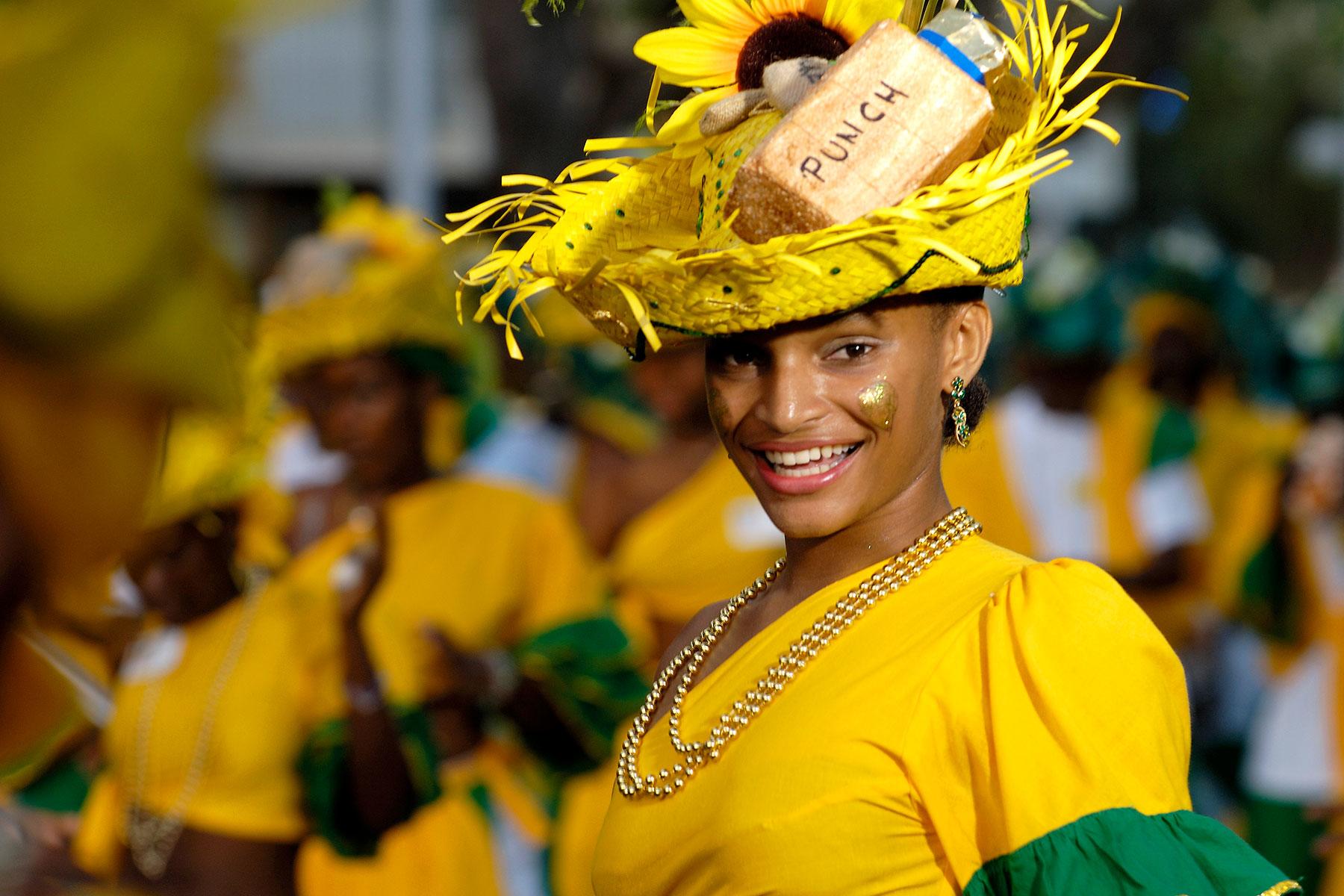If you’re planning to spend a holiday on Guadeloupe, be prepared to pair your meals with dancing, colorful costumes, and music.
Guadeloupe’s French Creole cuisine is a blend of Amerindian, African, Indian, and French culinary traditions. A bounty of fresh fruits des mer and locally-grown spices form the basis of most dishes, and many families and restaurants pride themselves on having the best “secret” recipe. The archipelago comes alive during festivals, and food is often its own sideshow. Try kakado (river crayfish) or boudin (sausage) over the Christmas season, dishes made from giant land crabs over Easter, or fresh-caught grilled fish for any holiday. Follow it all with a boule or two of coconut or passionfruit sorbet, and be prepared to be wowed by the creative flavors of this Caribbean island.





